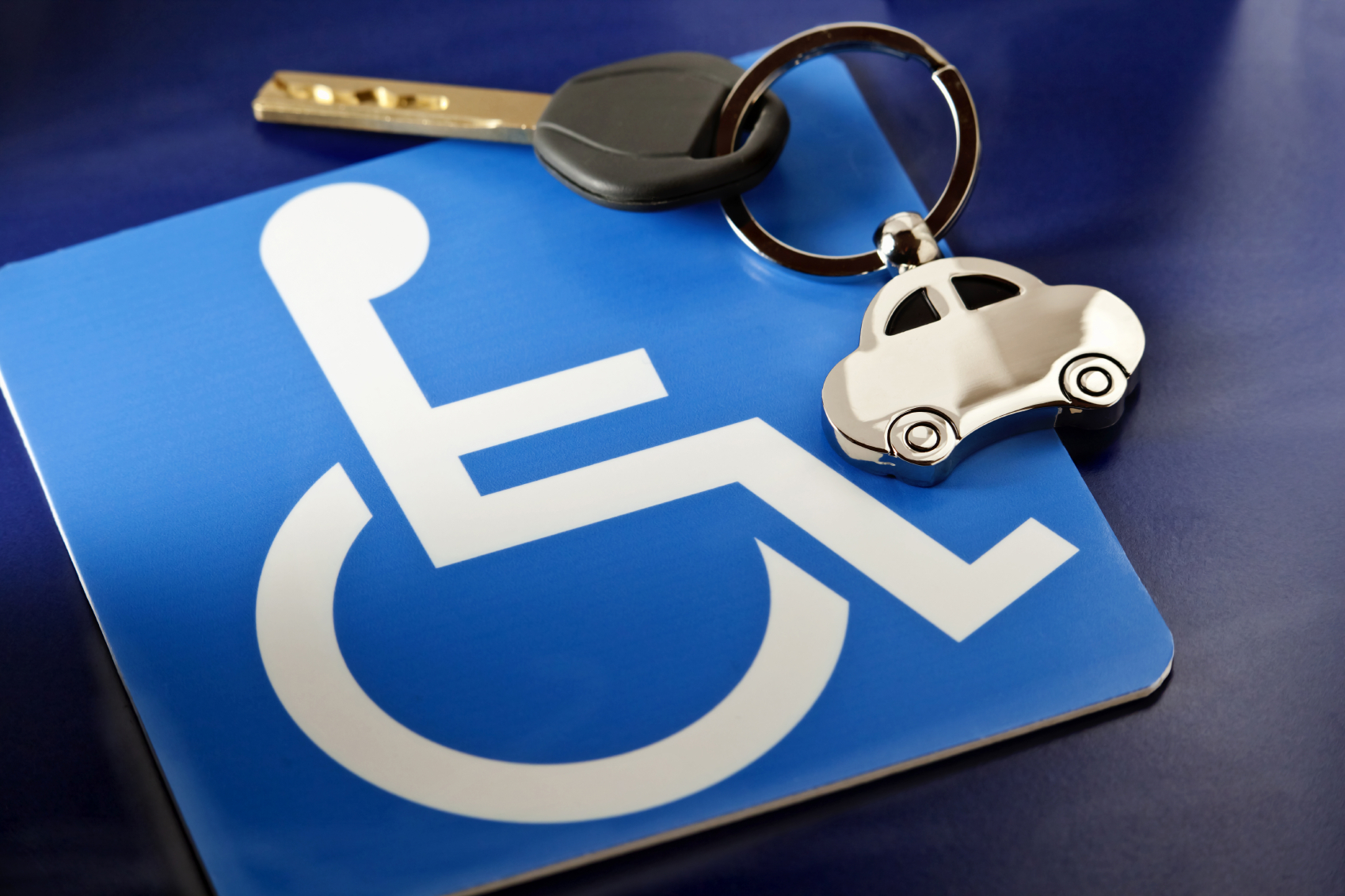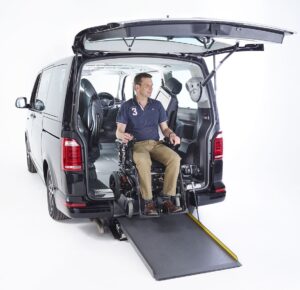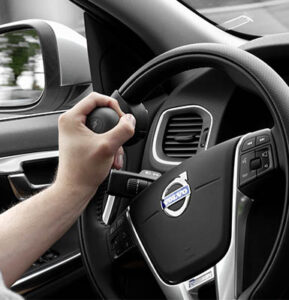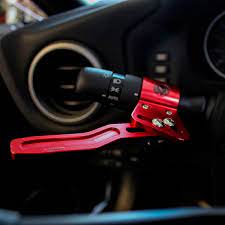…….. …. …………………… 
The Association for Driver Rehabilitation Specialists (ADED) was established in 1977 to support professionals working in the field of driver education/driver training and transportation equipment modifications for persons with disabilities, through education and information dissemination. The National Highway Traffic Safety Administration (NHTSA) recognizes that seniors are at risk due to age-related and medical conditions that can result in impairments which may affect safe mobility. There are Driving Rehabilitation Program Development Toolkits available which are funded by NHTSA.
Doctors and other health care professionals play an important role in the safe mobility of their patients. The American Medical Association encourages physicians to make driver safety a routine part of their medical services. Each state has its own licensing and license renewal criteria for drivers of private motor vehicles. In addition, certain states require physicians to report unsafe drivers or drivers with specific medical conditions to the driver licensing agency. A driver rehabilitation specialist, many of whom are occupational therapists, are trained to assess the drivers’ vision, perceptual, cognitive, and physical abilities and to make recommendations for adaptive driving equipment, if indicated.
These patients would likely need the services of a driver rehabilitation specialist:
• Any patient who has had an injury or illness that affects their physical mobility.
• Older drivers (including those with early onset dementia, Alzheimer’s disease or Parkinson’s disease.)
• Drivers with acquired disabilities (including those with physical or visual impairments related to stroke, brain injury and other conditions.
• Novice drivers with diagnoses such a spina bifida, cerebral palsy, autism and attention deficit hyperactivity disorder.
Occupational Therapists who specialize in this area of practice, help people who have lost the ability to drive due to disability, to regain their driving abilities.
The following charts will provide an overview of the aspects of Driver Rehabilitation and the Requirements to Practice in this Area.
Driver Rehabilitation Evaluation Process & Therapist Certification Requirements
| Skill area | Type of Evaluation | Certification Requirements |
| Physical mobility | Clinical evaluation of range of motion, strength, mobility. | Occupational therapy national certification and state license |
| Visual perceptual skills | Clinical evaluation of visual motor skills, depth perception, reaction time. | Occupational therapy national certification and state license |
| Cognitive skills | Clinical evaluation of orientation, decision making, judgment, planning ability | Occupational therapy national certification and state license |
| Behavioral status | Clinical screening of psychological status | Occupational therapy national certification and state license |
| Instrumental activities of daily living | Clinical or home evaluation of home and community mobility | Occupational therapy national certification and state license |
| Vehicle entrance/exit abilities and seating needs within the vehicle | On site evaluation of vehicle entrance/exit, seat positioning, mobility within the vehicle | –Occupational therapy national certification and state license –Driver Rehabilitation Specialist or Certified Driver Rehabilitation Specialist |
| Ability to transport mobility aids, such as wheelchairs, walkers, etc | On site evaluation of ability to transport mobility aids | –Occupational therapy national certification and state license –Driver Rehabilitation Specialist or Certified Driver Rehabilitation Specialist |
| .Driving ability on the road | Behind the wheel evaluation of driving ability, with or without adaptations | –Occupational therapy national certification and state license –Driver Rehabilitation Specialist or Certified Driver Rehabilitation Specialist –State certification as a driving instructor |
Driver rehabilitation intervention can include clinical treatment to strengthening underlying driving skills, behind the wheel training to apply skills, adaptations to vehicles to compensate for decreased driving skills, and education in driving and community resources.
| Clinical Treatment | Behind the Wheel Training | Adaptations | Education |
| • Therapeutic exercise to improve neck and shoulder range of motion • Weight training to improve upper or lower extremity strength • Visual motor tracking and speed tasks to improve reaction time • Training in visual recognition of road and street signs, vehicle controls, driving rules for drivers with impaired memory or learning disabilities |
• Use of bilateral upper extremities to operate vehicle controls and maneuver the vehicle steering wheel • Training in reaction time when applying the vehicle brakes • Driving simulations in a driving simulator to train driving skills • Actual on the road training, graded, based on the client’s driving abilities. |
• Wide angle mirrors to compensate for limited neck and trunk range of motion • Left foot brake • Hand brake and gas controls • Built up steering wheel or steering knob • Wheelchair lift for trunk or back seat • Wheelchair lift or ramp for a van • Fully adapted vehicle for severe limitations in mobility |
• Need for and use of adaptive equipment for driving • Education in special driving rules based on disability • Training in location of and use of public transportation when driving is not possible |
People with disabilities are often unable to drive standard vehicles. Specialized assistive technology makes it possible for these people to drive standard vehicles. If a person is wheelchair bound, custom vehicles with needed technologies are available. This chart will review some of the adaptive equipment and assistive technology available for people with specific disabling conditions.
| Assistive Technology | Purpose | Conditions that may benefit | Photo/Video |
| Wheelchair lift | Mechanically lifts a wheelchair into a vehicle. -Often used with taller vehicles, such as pick-up trucks and vans. |
-Spinal cord injury -Multiple sclerosis -Muscular dystrophy -Guillian-Barre syndrome -Lower extremity amputation |
 |
| Wheelchair ramp | Allows a person in a wheelchair to propel the wheelchair directly into the vehicle without transferring. -Used on public transportation vehicles. -Used in custom vans. |
-Spinal cord injury -Multiple sclerosis -Muscular dystrophy -Lower extremity amputation |
 |
| Hand controls | Transfers foot pedal control to the hands. -Can be installed to modify an existing vehicle or as an option on a custom vehicle -Used by people with no lower extremity function or with poor lower extremity sensation and reaction time. |
-Spinal cord injury -Lower extremity amputation -Multiple sclerosis -Muscular dystrophy -Other neurological conditions -Severe rheumatoid arthritis -Diabetic neuropathy |
A man with paraplegia explains how he drives using portable hand controls. |
| Left foot gas pedal | Allows the gas pedal to be placed on the left side | -Lower extremity amputation -Traumatic brain injury -CVA |
Video that shows a left foot gas pedal device. |
| Pedal extenders | Lifts the gas and brake pedals off the floor and makes them height adjustable. | -Dwarfism -Small stature due to other conditions |
A woman explains how she uses pedal extenders to drive her car. |
| Steering aids | Balls or handles on steering wheels give an extra gripping surface for people who have limited ability to grasp the steering wheel. | -Spinal cord injury -Upper extremity amputation -Traumatic brain injury -CVA -Multiple sclerosis -Muscular dystrophy -Guillain-Barre syndrome -Severe rheumatoid arthritis -Upper extremity nerve injuries |
 |
| Infrared Controls | Allow the secondary functions of the vehicle to be operated with one hand. -Designed to operate lights, turn signals, hazards, horn and wipers. -Mounted on a steering ball or paddle. |
-Upper extremity amputations -Traumatic brain injury -CVA -Spinal cord injury -Upper extremity nerve injuries |
Link to a company that provides infrared controls for vehicles. |
| Extended turn signal and parking brake handles | Provide increased leverage for people who have difficulty operating the turn signal or pulling the parking brake handle. | -Spinal cord injury -Multiple sclerosis -Muscular dystrophy -Severe rheumatoid arthritis -Guillain-Barre syndrome -Other conditions that result in upper extremity weakness. |
 |
| Extended or enlarged mirrors | Provide extra rear and side views for people with limited head mobility or peripheral vision. | -Neck or upper extremity arthritis -CVA -Traumatic brain injury -Diabetic retinopathy -Macular degeneration |
 |
| Bioptic lens system | Specialized glasses that enhance central vision for driving. -used with mild to moderate central vision loss |
-Macular degeneration | An optometrist demonstrates how to drive while wearing bioptic lenses. |
Gaps and Pathways Project: The Gaps and Pathways project is a collaborative effort between the American Occupational Therapy Association (AOTA) and the National Highway Traffic Safety Administration (NHTSA). The program is in the process of developing tools, resources, and initiatives that will be compiled into one general resource for driver rehabilitation programs and state licensing agencies. The overall program will support service to aging drivers who are medically at risk.
Resources:
https://www.aded.net/
https://www.aota.org/Practice/ProductiveAging/Driving/Practitioners.asp.
http://safemobilityfl.com/HealthCareProviderResources.